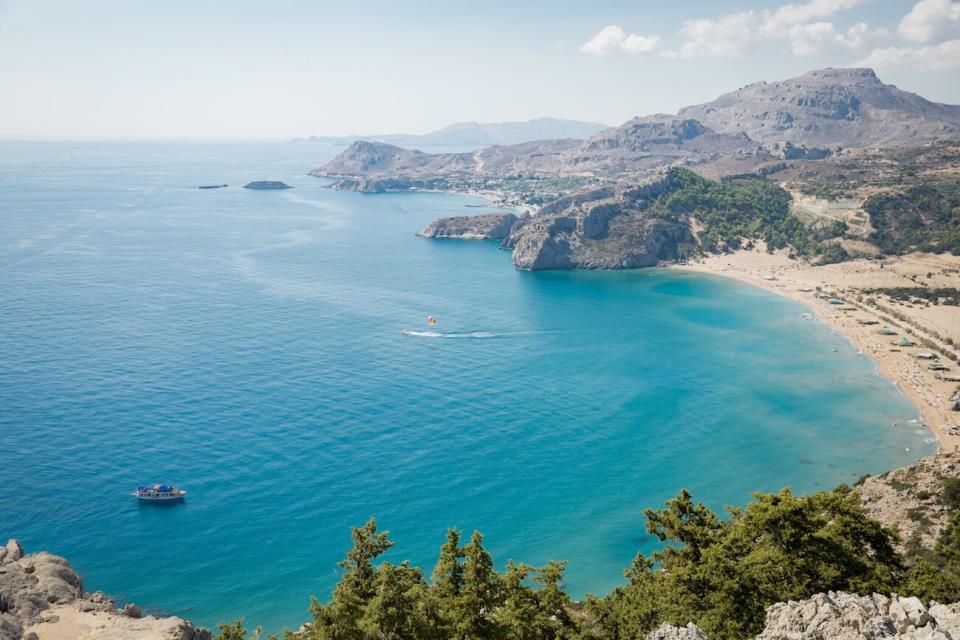A New Study Predicts Oceans Will Turn Brighter Blue—Here's Why
The world’s oceans have a wide variety of colors: the steel gray of the North Atlantic, the wild aquamarine of the South Pacific, the deep and icy green of the Arctic. New research from scientists at MIT suggests that those colors are likely to change this century, becoming more vibrant—but not more healthy.

Panoramic top view of Tsampika beach, mountains and blue sea, Rhodes island, Greece. sunny weather. Image courtesy of Getty.
Ocean color is determined by a few different factors, most importantly depth and, well, what’s actually in the water: not fish and whales and coral, really, but tiny organisms called phytoplankton. Phytoplankton are microscopic creatures that live in the top, sunlit layer of ocean. They absorb light and use chlorophyll, like plants, to turn that into energy. As with plants, the chlorophyll likes to suck in especially the red and blue parts of the light spectrum, so what we see is what bounces off, the shades of the rainbow that the phytoplankton doesn’t use: green.
There are different species of phytoplankton which live in different areas. The very cold waters around the North and South Poles tend to be very rich in phytoplankton, giving that ocean a green hue; in some parts of the tropics, other species of plankton thrive, giving a more turquoise than aquamarine look. In the areas in between, mostly, the ocean is blue—except when weather events like El Niño bring waves of new nutrients in, causing blooms of algae.
The new research builds on previous work that found that phytoplankton levels in the world’s oceans are decreasing dramatically due to rising ocean temperatures. A 2010 study reported that phytoplankton levels are down one percent each year since 1950. (The precise measurements of phytoplankton numbers tend to vary by study; it’s hard to count them.)
This study looks specifically at how ocean colors will change as a result of a decline in phytoplankton, and found that blue areas will become more blue—and thus more dead. Warmer temperatures near the poles may cause new blooms of algae, resulting in a deeper green color.
Related: These Lego Blocks Are Made From Sugarcane
This is concerning for the health of all the world's oceans. Phytoplankton are a base of the oceanic food chain, and they're eaten by krill and other small creatures as well as big whales. Bluer oceans mean less phytoplankton, which means less life, in general. The changing colors may be pretty to see, but it’s not something to root for.

